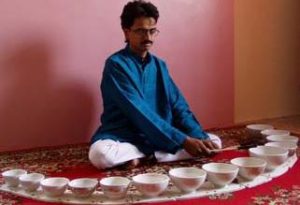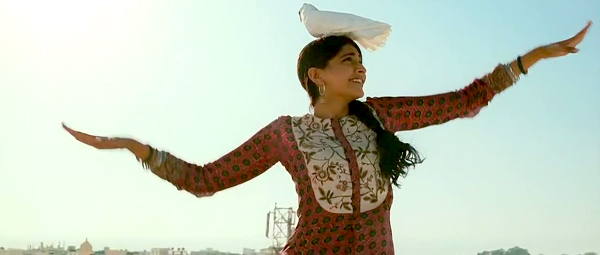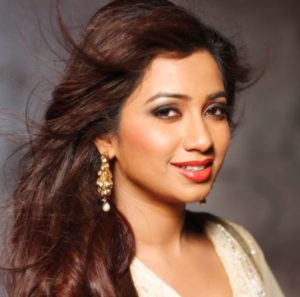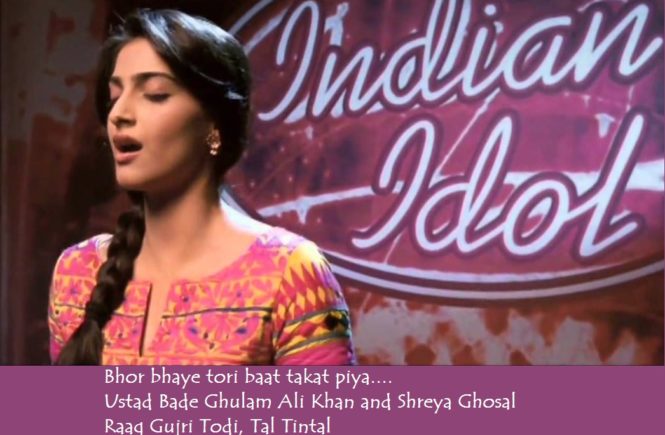Raaga Based Song of the Day: Bhor bhaye tori baat takat piya…….
Raag Gujri Todi, Tal Tintal
We have completed fifty days of Raaga Based Songs of the Day. Our first post in the series was titled ‘Raaga Based Song Of The Day #1’ and the song was a Mohammad Rafi and Lata Mangeshkar song from the 1970 Shakti Samanta movie Pagla Kahin Ka: Tum mujhe youn bhula na paoge. It is in Raag Jhinjhoti, Tal Kaherava.
Our fiftieth post was titled ‘Raaga Based Song Of The Day #50‘ and the song was a Lata Mangeshkar song from the 1960 Radhu Karmakar movie Jis Desh Mein Ganga Behti Hai: O basanti pavan paagal. It is in Raag Basant Mukhari, Tal Kaherava.
This blog has a number of posts on Raaga based songs in Hindi movies titled similarly; for example: ‘The Best Raaga Based Songs in Hindi Movies – Raaga Bhimpalasii – Part I‘.
In the last fifty days of sharing Raaga based songs of the day, I have given you songs based on Raag Jhinjhoti, Gara, Bhimpalasi, Madhuvanti, Shivaranjani, Bihag, Pahadi, Sarang, Pilu, Bhairavi, Khammaj, Charukesi, Kalyan or Yaman, Desh, Malgunji, Kirwani, Kedar, Bageshri, Megh Malhar, Bhupali, Ahir Bhairav, Malkaush, Mand, Adana, Kafi, Rageshri, Jaunpuri, Tilang, Janasammohini, Chayanat, Shuddha Kalyan, Gaur Sarang, Jogiya, Asavari, Maru Bihag, Durga, Lalit, Puria Dhanashri, Bhinna Sahdja, Sohani, Multani, Patdeep, Jaijaiwanti, Tilak Kamod, Hemant and Basant Mukhari. The only two raag that has been repeated so far are Pahadi, the raaga of my home place in the Himalayas, and Maru Bihag. That makes a total of 46 raagas so far; today’s one is 47th.
Today, I give you a song in Raag Gujri Todi, Tal Tintal.
However, first, lets take up the value added learning of today. Today, we shall learn about Jaltarang.

Jaltarang consists of a number of ceramic (China) or metal bowls filled with varying levels of water to produce different resonating frequencies. These are placed in front of the player in a semi-circle and the edges of the bowls are struck with beaters (wooden sticks or mallets) that causes the bowls to ring. Jaltarang is a dying art these days. However, it is one of the oldest musical instruments. The earliest mention of it is in Vatsayana’s Kamasutra; instead of bowls, though, music was made with glasses. George Harrison played the Jaltarang on the title track of his 1982 album Gone Troppo. Some of the accomplished Jaltarang players in India are: Milind Tulankar, Nemani Somayajulu, Vidushi Shashikala Dani, and Seethalakshmi Doraiswamy.
As far as Hindi movies are concerned, well Jal Tarang was actually the name of a 1949 movie with music by Husnlal Bhagatram. There is a Kishore Kumar song from 1982 movie Kamchor that has Jal Tarang played: Tumse badhkar duniya (composer Rajesh Roshan). Another popular song is from the 2003 Mani Ratnam movie Roja, a composition of AR Rahman: Dil hai chhota sa chhoti si aasha.
As I mentioned, today’s song is composed in Raag Gujri Todi, Tal Tintal.
Gujri Todi belongs to Todi Thaat in Bhatkhande’s system of raagas. Though I haven’t yet taken up any songs in Raag Todi, I have taken a few in Todi Thaat; for example, Ajahun na aaye balma (Raag Madhuvanti), and Daya kar he Giridhar Gopal (Raag Multani). Its Jati is Shadhav-Shadhav, ie, six notes in Aaroha and Avaroha (the swar that is missing is Pancham or Pa); Rishabh, Gandhar and Dhaivat are Komal, Madhyam is Teevra. Rest all are Shuddha Swaras. The raag is normally to be sung on the second prahar of the day (that is, 9 AM to Noon).
The name Gugari or Gurjari suggests that it is a raaga of the Gujar or Gurjar tribe from Gujarat. Eliminating Pancham or Pa from Raag Todi results in the melody of Gujri Todi. It is a raaga full of Karuna Ras.
As far as Tintal is concerned, I have already told you enough on the 19th and 25th days.
Some of the popular songs composed in this raaga are: Ek tha bachpan (Tal Dadra), Jaa jaa re ai pathikwa (Tal Tintal), and Watan pe jo fida hoga (Tal Tintal).
Today’s song is from the 2009 Rakeysh Omprakash Mehra (he had earlier made Aks and Rang De Basanti) movie Delhi 6 starring Abhishek Bachchan, Sonam Kapoor, Om Puri, Waheeda Rahman, Rishi Kapoor, Atul Kulkarni, Deepak Dobriyal, Divya Dutta and Aditi Rao Hydari. The number 6 refers to the PIN (Postal Index Number) Code of Chandini Chowk in Delhi, ie, 110006. In the story Rakeysh Omprakash Mehra drew hugely on his growing up years in the same area.

Even though the movie did only averagely at the box-office, I liked the theme of common people of the area with their petty feuds and the ‘Kala Bandar’ (Black Monkey) that wreaks havoc in their lives. It turned out that the Black Monkey was actually the social and cultural biases that people had deep in their hearts, even though in Delhi it was actually in the news in the year 2000.
The movie did well to win the Nargis Dutt Award for Best Feature Film on National Integration for that year.
I was particularly impressed by the musical score of the movie by AR Rahman and the lyrics of the songs by Prasoon Joshi. Two of the songs that I still remember are Masakali and Genda Phool.

This song was earlier sung by Ustad Bade Ghulam Ali Khan. AR Rahman did well to fuze Shreya Ghosal‘s voice in it. I had heard a lot of criticism about Shreyas not matching up to the singing skill of the maestro. However, I liked it then and I like it even now. Despite all the criticism about her ‘taan sargams’ being off the mark, I would like to add that if someone of the stature of AR Rahman tried to fuze her voice with Ustad Bade Ghulam Ali Khan, it would have been deserving of that. After all, how can we forget that it was AR Rahman who made her a success in 2002 after making her sing Munbe vaa in Tamil movie Sillunu Oru Kaadhal; at the same time when Sanjay Leela Bhansali debuted her in his Devdas? Later, her rendition of Mohe rang de laal in Bhansali’s 2015 movie Bajirao Mastani had me speelbound.
Please enjoy Bade Ghulam Ali Khan and Shreya Ghoshal sing a composition of AR Rahman in Raag Gujri Todi, Tal Tintal, on the lyrics of Prasoon Joshi: Bhor bhaye tori baat takat piya….
Aaaaa..
Bhor Bhayeee Tori Baat Takat Piya… (2)
Naina Alsaaye Ne Bhaye, Sagari Rain Ka Jaage
Bhor Bhayeee Tori Baat Takat Piya
Baat Takat Piya.. Sautan Ki Bhag Jaage
Bhor Bhayeee Tori Baat Takat Piya… (2)
Hum San Mukh Ki Badiya.. Karat Savar Tori Basak
Sautan Ki Bhag Jaage
Bhor Bhayeee Tori Baat Takat Piya… (2), Aaa Aaa,
Bhor Bhayeee Tori Baat Takat Piya, Sautan Piya, Aa Aa
Bhor Bhayeee Tori Baat Takat Piya
Takat Piya, Re Bhai Re, Aaaa…
Bhor Bhayeee Tori, Bhor Bhayeee Tori Baat Takat Piya
Bhor Bhayeee Tori Baat Takat Piya
Naina Alsaaye Ne Bhaye, Sagari Rain Ka Jaage
Bhor Bhayeee Tori Baat Takat Piya… (2)
Naina Alsaaye Ne Bhaye, Sagari Rain Ka Jaage
Bhor Bhayeee Tori Baat Takat Piya
Bhor Bhayeee Tori… (3)
We have intended to learn about Raaga based music whilst we entertain ourselves with Raaga based songs. So, lets, once again, take stock of our collective learning so far:
- On the first day we learnt about the Raaga system devised by Pandit Vishnu Narayan Bhatkhande, which is the prevalent system in Hindustani Classical Music and based on ten Thaats.
- On the second day we learnt about Tal or Taal.
- On the third day we learnt about characteristics of Raagas that included Swar, Jati, Thaat, Arohana and Avarohana, Vadi, Samvadi and Pakad.
- On the fourth day, we learnt about Sargam.
- On the fifth day, we learnt about notations used in Indian classical music or simply Swar Lipi.
- On the sixth day, we learnt about the Ras (sentiments) that Raagas evoke.
- On the seventh day, we learnt about various types of Swar: Shuddha, Achal, Vikrut, Komal and Teevra.
- On the eighth day, we learnt the parts of a composition in Indian Classical Music.
- On the ninth day, we learnt the names of some of the popular instruments used in Indian Classical Music.
- On the tenth day, we learnt about the sources of names of Raagas.
- On the eleventh day, we learnt about why Bhairavi is the first raag to be taught to beginners and also why it is the last in a performance.
- On the twelfth day, we learnt about Khammaj Thaat.
- On the thirteenth day, we learnt about Tal Punjabi Theka or Sitarkhani.
- On the fourteenth day, we learnt about Alap.
- On the fifteenth day, we learnt about List of Raagas (Raagmala) in my favourite book: Sri Guru Granth Sahib.
- On the sixteenth day, we learnt about tips for raaga identification.
- On the seventeenth day, we learnt the basics of Gharana system.
- On the eighteenth day, we learnt about Filmi Sangeet.
- On the nineteenth day, we learnt about the commonest Tal in Raagas: Tintal.
- On the twentieth day, we learnt about the Kafi Thaat.
- On the twenty-first day, we learnt a little more in detail about the classification of Raagas.
- On the twenty-second day, we learnt the essential differences between Bhairavi and Bhairav.
- On the twenty-third day, we learnt a little more in detail about the Jati or Jaati of a raaga.
- On the twenty-fourth day, we learnt details of Thaat Bilawal, the most basic thaat in the Bhatkhande’s system of raagas.
- On the twenty-fifth day, we learnt about Tintal.
- On the twenty-sixth day, we learnt in detail about the Raaga – Samay linkage.
- On the twenty-seventh day, we learnt about Lehar.
- On the twenty-eighth day, we learnt about the history of the Hindustani Music.
- On the twenty-ninth day, we learnt about Dhrupad.
- On the thirtieth day, we learnt about Rupaktal that I was introduced to, a few months back, by my friend Anand Desai.
- On the thirty-first day, we learnt about Khayal.
- On the thirty-second day, we learnt about Thumri.
- On the thirty-third day, we learnt about Tappa.
- On the thirty-fourth day, we learnt about Tarana.
- On the thirty-fifth day, we learnt about Tal Dipchandi (Moghali).
- On the thirty-sixth day, we learnt about Tabla.
- On the thirty-seventh day, we learnt about Kirtan.
- On the thirty-eighth day, we learnt about Pakhawaj.
- On the thirty-ninth day, we learnt about Hori.
- On the fortieth day, we learnt about Dadra.
- On the forty-first day, we learnt about Kajri.
- On the forty-second day, we learnt about Chaiti.
- On the forty-third day, we learnt about Sarangi.
- On the forty-fourth day, we learnt about Shehnai.
- On the forty-fifth day, we learnt about Sarod.
- On the forty-sixth day, we learnt about Bansuri.
- On the forty-seventh day, we learnt about Ektal and Tanpura.
- On the forty-eighth day, we learnt about Veena.
- On the forty-ninth day, we repeated our learning of Veena with a small excitement added.
- On the fiftieth day, we learnt about Dilruba/Esraj.
- And today, on the fifty-first day, we learnt about Jaltarang.
There is much more still to be learnt and enjoyed.
Please stay tuned!

Really very exhaustive write up.Sir pl note the name of the Raag is Gurjari Todi.
Thank you Anand. Have explained in the article itself about the two ways of writing it: Gurjari and Gujri. The latter is how it is given in Sri Guru Granth Sahib (pages 489 to 527) and in many popular sites on classical music: Surgyan, Chandrakantha, and Wikipedia. Even in Swarganga.
Fantastic post . However it is disheartening to learn that Jaltarang is a dying art now . Just listened the song Tumse Badhkar and found the notes of Jaltarang at regular intervals so enchanting. It striks the heart and sends a thrill into the entire body . Lovely.
Thank you Jaswant for your encouragement.
Congratulations for completing 50 days of raga based posts. Each one is full of knowledge. Looking forward for many more.
Thank you, Suman